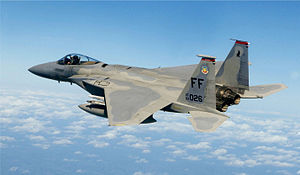Root Cause Analysis – Do it before even thinking about discipline!
By Chris Vallee
I was an aircraft mechanic in USAF when this incident occurred. The aftermath of the F-15 Crash and Pilot Fatality continued with an Airman’s suicide was loss to many.
While, I knew the basics, I just recently found a follow up report and wanted to share it. The information is taken directly from the article as is without my paraphrase. Here is the website.
An Air Force review board has partly cleared the name of an F-15 mechanic who committed suicide in 1996 rather than face a court-martial for a fatal repair error.
Evidence showed that TSgt. XXXXXX did not perform the botched control rod maintenance at issue, although he did check the work and found nothing wrong.
In addition, several previous incidents in which other mechanics made the same mistakes should have alerted the Air Force to a potential problem, according to the board.
“We did not think XXXX was totally free of all responsibility,” said Lee Baseman, chairman of the correction board. “But it was our view that he was unduly carrying the burden for a series of missteps that went back at least 10 years.”
In May 1995, XXXX and TSgt. YYYYYY were carrying out maintenance on an F-15C based at Spangdahlem AB, Germany, when YYYYY accidentally crossed flight control rods while reinstalling them. XXXX did not catch the miscue, which made the airplane impossible to control in the air. It subsequently crashed, killing Maj. Donald G. Lowry Jr. (Great GUY!!)
Air Force authorities charged XXXX and YYYYY with dereliction of duty and negligent homicide. XXXXX shot himself in October 1996 during a break in court proceedings. Commanding officers then accepted YYYYY request for administrative separation, on grounds that the interests of the service would be best served by bringing the tragic case to a swift conclusion.
Similar crossed-rod cases occurred at least twice before the Spangdahlem crash, noted the review board-once in 1986 and again in 1991. But in both instances the problem was caught before takeoff.
In its conclusions, the board stated, “After the Black Hawk shootdown [in 1994], the demand for accountability for this accident may have been pursued with such zeal as to leave fairness and equity behind. The fatal crash was a tragedy waiting to happen, yet the decedent was singled out to pay for an accident that could have been prevented anywhere along the ‘chain of events’ had any of the numerous individuals involved made different decisions.
“Most disturbing was the way the Air Force leadership allowed this case to be handled. The Air Force’s representatives resisted the inclusion of potentially exculpatory evidence from the review and report and managed to have a good deal of it excluded from consideration in the pending trial.”
Following the death of Lowry, the Air Force took steps to prevent such a mix-up from happening again. The control rods are now color-coded to ensure proper installation, and the maintenance technical manual warns against the mistake. All flight control systems must now be checked any time the control rods undergo maintenance. ” “
Ref: Journal of the Air Force Association, June 1998 Vol. 81, No.5, Peter Grier





I was in the 22 when it happened. I was actually in our shop van heading to 53rd/ Saw the explosion cloud and knew it wasn’t good.
LC,
Sad day for sure. Thank you very much for your service.
Chris
As a 25-year AF veteran with 20+ years as a maintainer, shouldn’t a ground check of the flight controls have found the problem after the maintenance was performed and long before preflight and takeoff? During my tenure, 1973-1998, any time, not just some times, any time “Red X’ (condition which ground the aircraft) items were worked-on or replaced, they must be operationally of functionally checked on the ground. A ground check with hydraulic or aircraft power would have identified the problem; therefore eliminating the flight mishap. Poor technical data instructions, improper installation, or negligence would have been detected with a full technical data operational check.